Devon: Northern Lights in rare visit to southern England
- Published

Northern Lights make a rare appearance in Devon thanks to a particularly strong solar flare
Night sky watchers were treated to a rare sighting of the Northern Lights in Devon.
The green and red colours of the Aurora Borealis lit up the sky at Raddon Hill near Crediton.
Amateur astronomer Luke Farley got the shot that has excited experts on the natural light phenomenon which is usually seen in polar areas.
It was one of a number of sightings around the UK due to a particularly strong solar flare.
Particles from the flare interact with the Earth's magnetic field, creating the amazing effect.
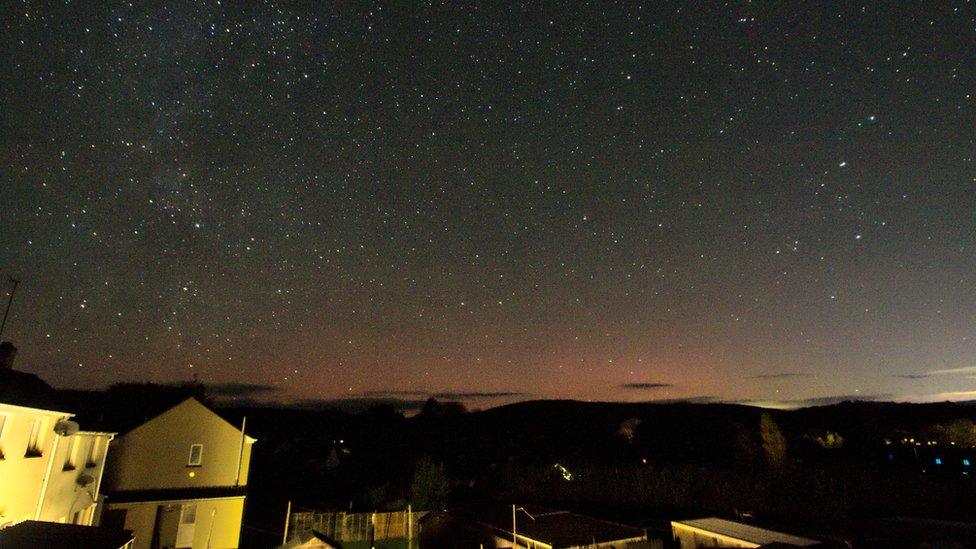
Rob Tilsley captured the Northern Lights at Buckfast in Devon
"I have an app which measures the magnetic field and it went mad at about 8.15 last night," said Mr Farley.
"They are not usually visible this far south.
"It's wonderful because I spend a lot of time every year in places like Scotland trying to capture them and here they are on my doorstep."
The red and green hues of the Northern Lights are clearly visible in his shot, but he admitted he consulted astronomer friends before he was sure of what he had on film.

Analysis: David Braine, BBC Senior Weather Presenter
Coronal mass ejections (CMEs) are the cause of Northern Lights, these large explosions on the throw out huge masses of charged particles into space.
At the moment the source of these is along the suns equator and pointing directly at the earth which is unusual.
These particles travel towards Earth where they are captured by the Earth's magnetic field and guided towards the geomagnetic polar regions which is why in the northern hemisphere places like Norway, Scotland, Greenland and Iceland are famed for their displays.
On their way to us these charged particles are slowed down by Earth's atmosphere, acting as a natural shield, and collide with gas molecules to give off energy as light.
The colour of the light depends on the molecules - the oxygen, nitrogen and other gases in the atmosphere have their own particular colours resulting in the range of blues, greens, yellows and reds observed in the aurora.
Only very strong CMEs can reach the latitudes of southern Britain, as a result they are rare, but also they have to travel through a thicker atmosphere to get to us resulting in more interaction and colours of light of pink yellow and orange like that seen from last night.


Northern Lights at Derwentwater created a stunning display of orange, pink and yellows
Commenting on Mr Farley's photograph, astronomy author Will Gater, from Taunton in Somerset, said: "You can see the red glow above the green, I think it's really exciting."
And he said there may be more sightings as the solar flare cycle continued.
"It still requires some perseverance and the right conditions to see them, but we could see more of them in future years," he said.
PA news agency photographer Owen Humphreys was treated to a stunning display of orange, pink and yellows in the sky above Derwentwater in the Lake District.
He said: "This was one of the best I have seen in the UK for years.
"The reds and the greens were really vibrant and makes up for all the times we go out in the middle of the night and don't see anything."

Follow BBC News South West on Twitter, external, Facebook, external and Instagram, external. Send your story ideas to spotlight@bbc.co.uk, external.
Related topics
- Published4 November 2021
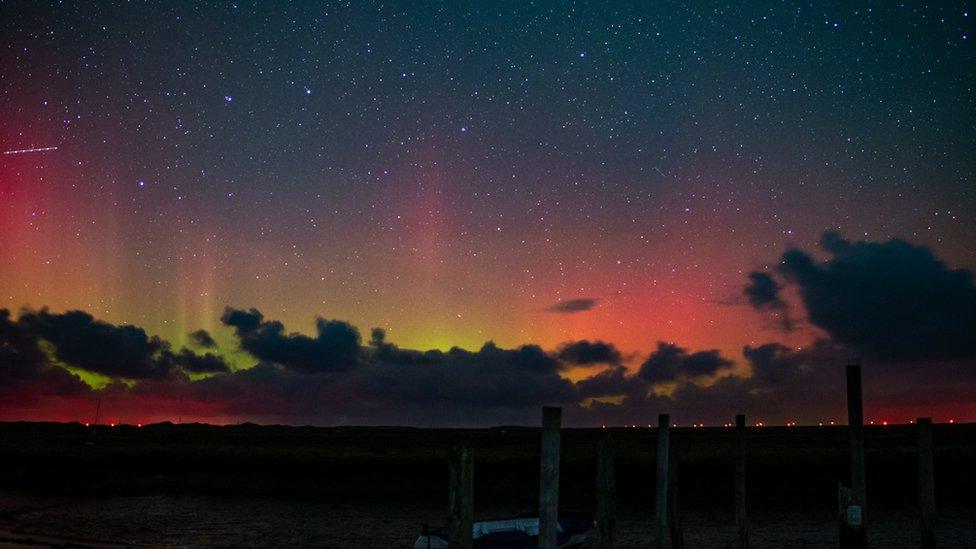
- Published10 June 2021
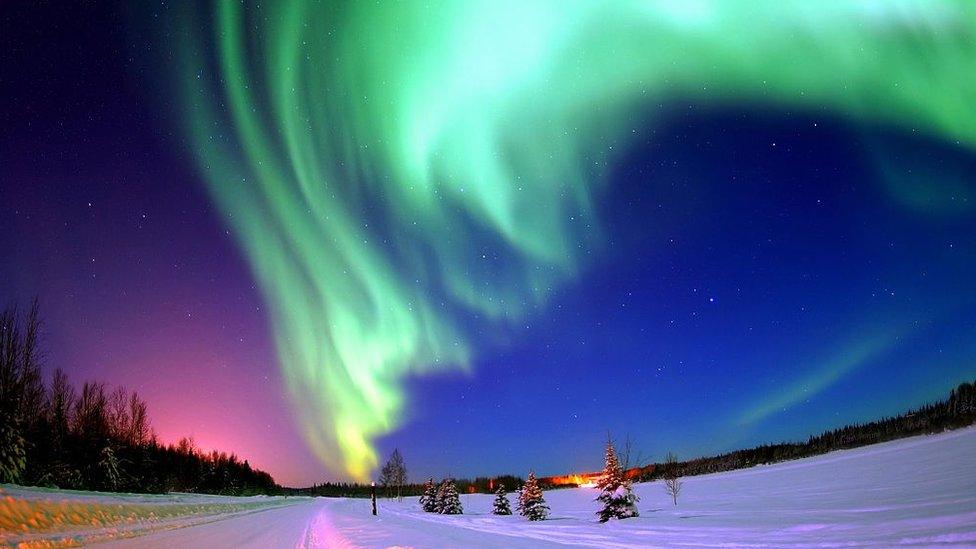
- Published19 March 2018
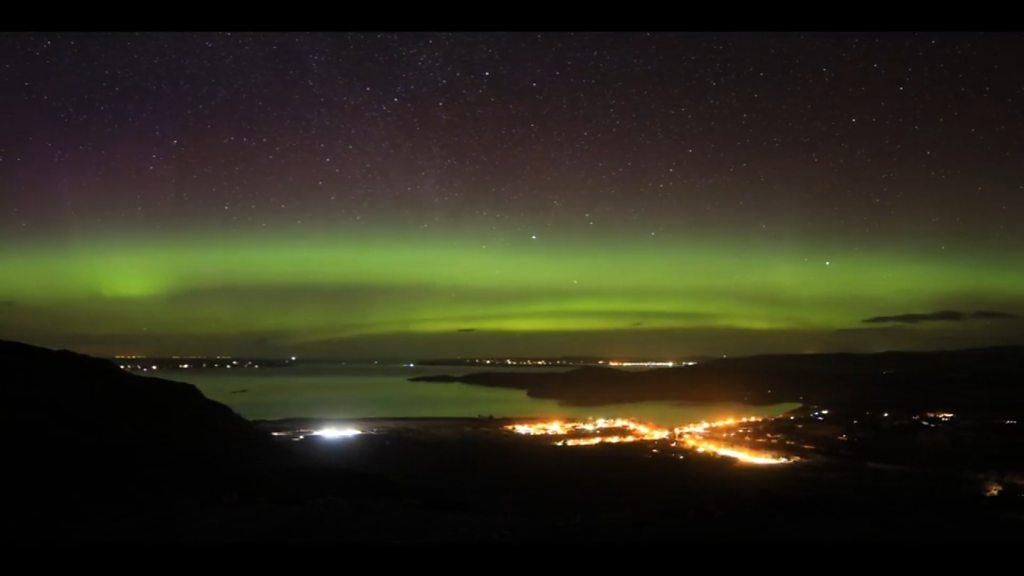
- Attribution
- Published16 March 2016
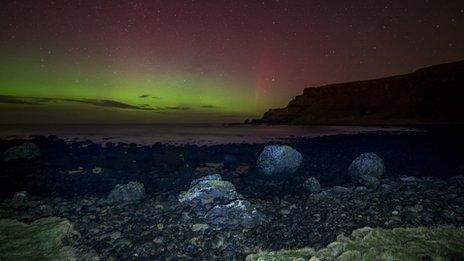
- Published17 February 2015
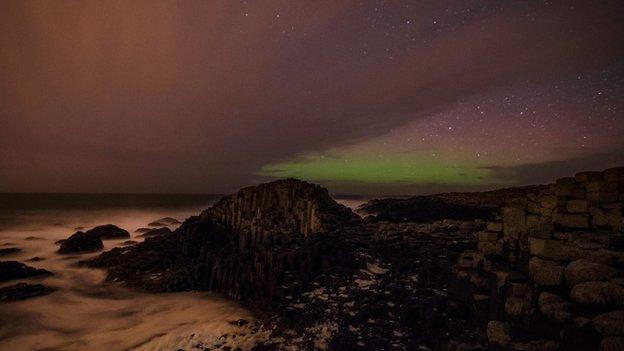
- Published16 February 2011
